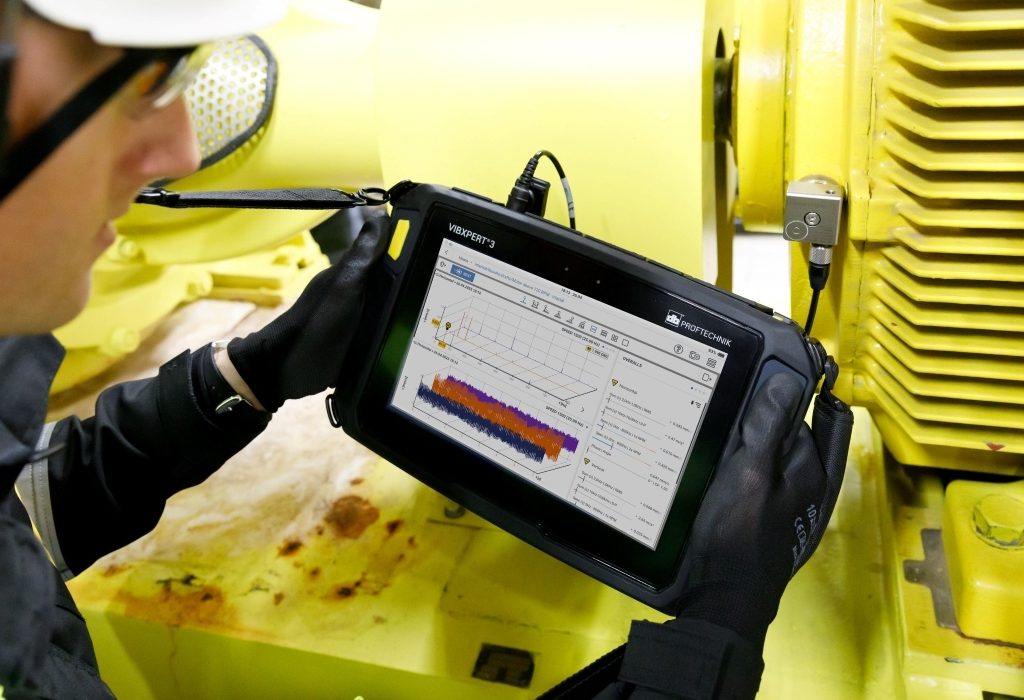How embracing AI can make real improvements to industrial manufacturing

Smart organisations are using their data in a connected approach to maintenance. Michael DeMaria, Director, Product Management, Fluke Reliability explains.
In a turbulent world, where the slightest disruption to your manufacturing system can have significant consequences, anything that aims to avoid precious downtime is welcome. While society at large is just beginning to realise the potential of artificial intelligence (AI) in virtually every aspect of our lives, the impact it could have on industrial maintenance operations has been obvious for some time.
A thorough approach to scheduling and carrying out periodic checks will catch most issues before they cause serious problems. How much better is it, though, to have the equivalent of an expert with decades of experience closely watching every piece of equipment involved in a process, 24 hours a day, seven days a week? AI not only provides this amount of data, but is capable of analysing it in a way that couldn’t be achieved manually.
AI’s unique virtues make it a perfect fit for approaches to condition monitoring like Fluke Reliability’s ‘connected reliability’ philosophy, which brings systems from across an enterprise together into a joined-up maintenance ecosystem. Encompassing sensor hardware, software and services, connected reliability delivers tangible results. As well as providing information, it helps users make decisions that prevent machine failures, reduce costs, standardise operations, improve safety and maximise operational effectiveness.
The role that AI can play in this process is illustrated by Fluke Reliability’s recent acquisition of Azima DLI, a market leader in AI-powered vibration analysis for remote condition-monitoring.
Even at a low level, barely discernible to an operator, spotting an anomalous vibration pattern in its earliest stages can trigger pre-emptive action that minimises the length of time an asset is out of action. AI achieves this by taking the wealth of data gathered by sensors, comparing it with what it has learnt from decades of input and using algorithms to generate valuable insights.
Because Azima DLI’s Watchman platform has been developed over more than 30 years, it is able to analyse around 93% of machine tests without the need for human intervention. Like all AI, that knowledge is continually being refined as software and applications evolve, but it already understands more than 150,000 unique failure modes across 80,000 machines.
Filtering out issues that don’t need expert analysis helps teams prioritise their work. It doesn’t eliminate the crucial part that expert humans play though; Fluke Reliability’s acquisition sees it taking on Azima DLI’s team of vibration-analysis experts, seasoned analysts who average a five-times greater increase in utilisation than traditional programmes, thanks, in part, to the AI-enabled platform.
Emergence of the Industrial Internet of Things (IIoT), enabled by the availability and deployment of huge numbers of affordable sensors, has generated vast amounts of data that can be overwhelming for humans. AI doesn’t just provide a way of filtering out the noise, with training it can be the source of expert advice when it spots a potential problem.
The ability to work alongside humans, helping them make smart, informed decisions promptly, is where AI’s strengths come to the fore. Plus, preventing problems before they happen rather than dealing with them in a reactive way eliminates one headache from a list that includes supply chain complexity, fluctuating consumer demand, and skills shortages.
Being based on decades of learning means that established systems like Azima’s can help even organisations with very little experience of predictive maintenance incorporate AI into their processes. And as long as a plant already has a proactive maintenance strategy and is streaming monitoring data from wireless, installed or handheld sensors, AI tools can sit on top of that existing infrastructure.
Working with an experienced solution provider makes the process straightforward. Projects integrating AI into an existing maintenance programme can start with a small pilot, monitoring just a few assets, and expand as employees become comfortable with the system.
With careful planning and implementation, adding a trained AI to a condition-monitoring programme can lead to continuous improvement and more efficient use of resources. Key to success, though, is to focus on what is going to be achieved, and not launch into things simply through a fear of being left behind as the rest of the world plunges into an AI-assisted future.
